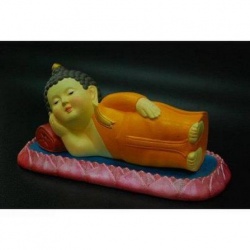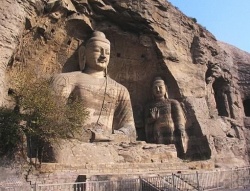Sutta Pitaka
The Sutta Pitaka is the first division of the Tipitaka, the sacred scriptures of Buddhism, the other parts being the Vinaya Pitaka and the Abhidhamma Pitaka.
The Sutta Pitaka contains the discourses of the Buddha and some by his disciples and is made up of five books or nikàyas - the Long Discourses or Digha Nikàya, the Middle Length Discourses or Majjhima Nikàya, the Connected Discourses or Samyutta Nikàya, the Numbered Discourses or Anguttara Nikàya and the Miscellaneous Discourses or Khuddaka Nikàya. These discourses were committed to memory by monks and nuns and sometimes even by lay man and women and orally transmitted for several hundred years after the Buddha’s passing. Historical records say that the suttas were written down in the 1st century BCE in Sri Lanka, although this had probably already been done earlier in India.
Sutta Pitaka, or Suttantapitaka: One of the three divisions of the Tipitaka. It consists of five Nikāyas
Dīgha,
Majjhima,
Samyutta,
Anguttara
Khuddaka.
The first four are homogeneous and cognate in character. A number of suttas appear in two or more of them.
The Sutta Pitaka, the second division of the Tipitaka, consists of more than 10,000 suttas (discourses) delivered by the Buddha and his close disciples during and shortly after the Buddha's forty-five year teaching career, as well as many additional verses by other members of the Sangha. More than one thousand sutta translations are available on this website.
The suttas are grouped into five nikayas, or collections:
Digha Nikaya
The "Long Discourses (Pali digha = "long") consists of 34 suttas, including the longest ones in the Canon. The subject matter of these suttas ranges widely, from colorful folkloric accounts of the beings inhabiting the deva worlds (DN 20) to down-to-earth practical meditation instructions (DN 22), and everything in between. Recent scholarship suggests that a distinguishing trait of the Digha Nikaya may be that it was "intended for the purpose of propaganda, to attract converts to the new religion." [1]
Majjhima Nikaya
The "Middle-length" Discourses (Pali majjhima = "middle") consists of 152 suttas of varying length. These range from some of the most profound and difficult suttas in the Canon (e.g., MN 1) to engaging stories full of human pathos and drama that illustrate important principles of the law of kamma (e.g., MN 57, MN 86).
Samyutta Nikaya
The "Grouped" Discourses (Pali samyutta = "group" or "collection") consists of 2,889 relatively short suttas grouped together by theme into 56 samyuttas.
Anguttara Nikaya
The "Further-factored" Discourses (Pali anga = "factor" + uttara = "beyond," "further") consists of several thousand short suttas, grouped together into eleven nipatas according to the number of items of Dhamma covered in each sutta. For example, the Eka-nipata ("Book of the Ones") contains suttas about a single item of Dhamma; the Duka-nipata ("Book of the Twos") contains suttas dealing with two items of Dhamma, and so on.
Khuddaka Nikaya
The "Division of Short Books" (Pali khudda = "smaller," "lesser"), consisting of fifteen books (eighteen in the Burmese edition):
Khuddakapatha — The Short Passages
Dhammapada — The Path of Dhamma
Udana — Exclamations
Itivuttaka — The Thus-saids
Sutta Nipata — The Sutta Collection
Vimanavatthu — Stories of the Celestial Mansions
Petavatthu — Stories of the Hungry Ghosts
Theragatha — Verses of the Elder Monks
Therigatha — Verses of the Elder Nuns
Jataka — Birth Stories
Niddesa — Exposition
Patisambhidamagga — Path of Discrimination
Apadana — Stories
Buddhavamsa — History of the Buddhas
Cariyapitaka — Basket of Conduct
Nettippakarana (Burmese Tipitaka only)
Petakopadesa (Burmese Tipitaka only)
Milindapañha — Questions of Milinda (Burmese Tipitaka only)
Notes
1.
Bhikkhu Bodhi, Connected Discourses of the Buddha (Somerville, Mass.: Wisdom Publications, 2000), p.31, referring to Joy Manné's "Categories of Sutta in the Pali Nikayas and Their Implications for Our Appreciation of the Buddhist Teaching and Literature," Journal of the Pali Text Society 15 (1990): 29-87.


